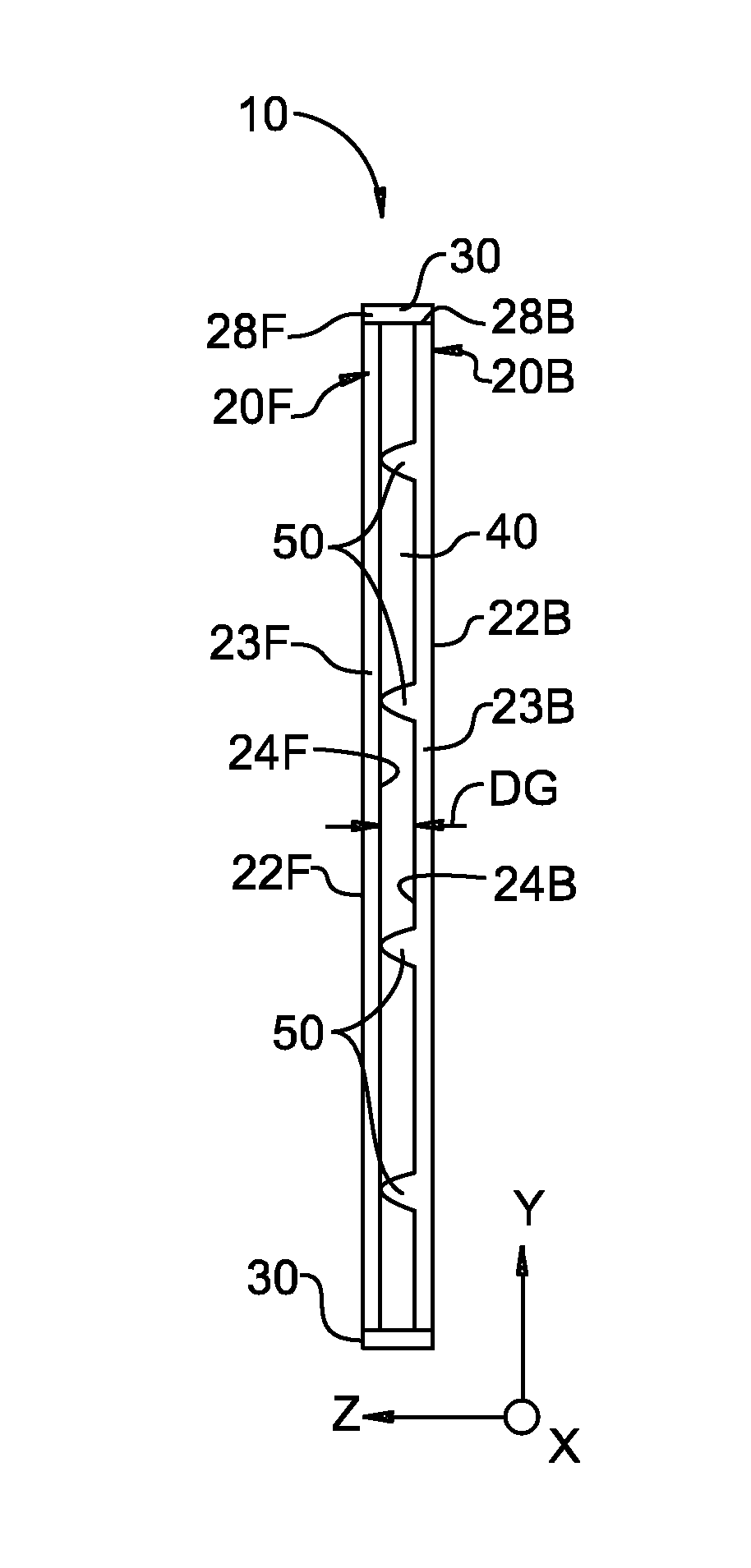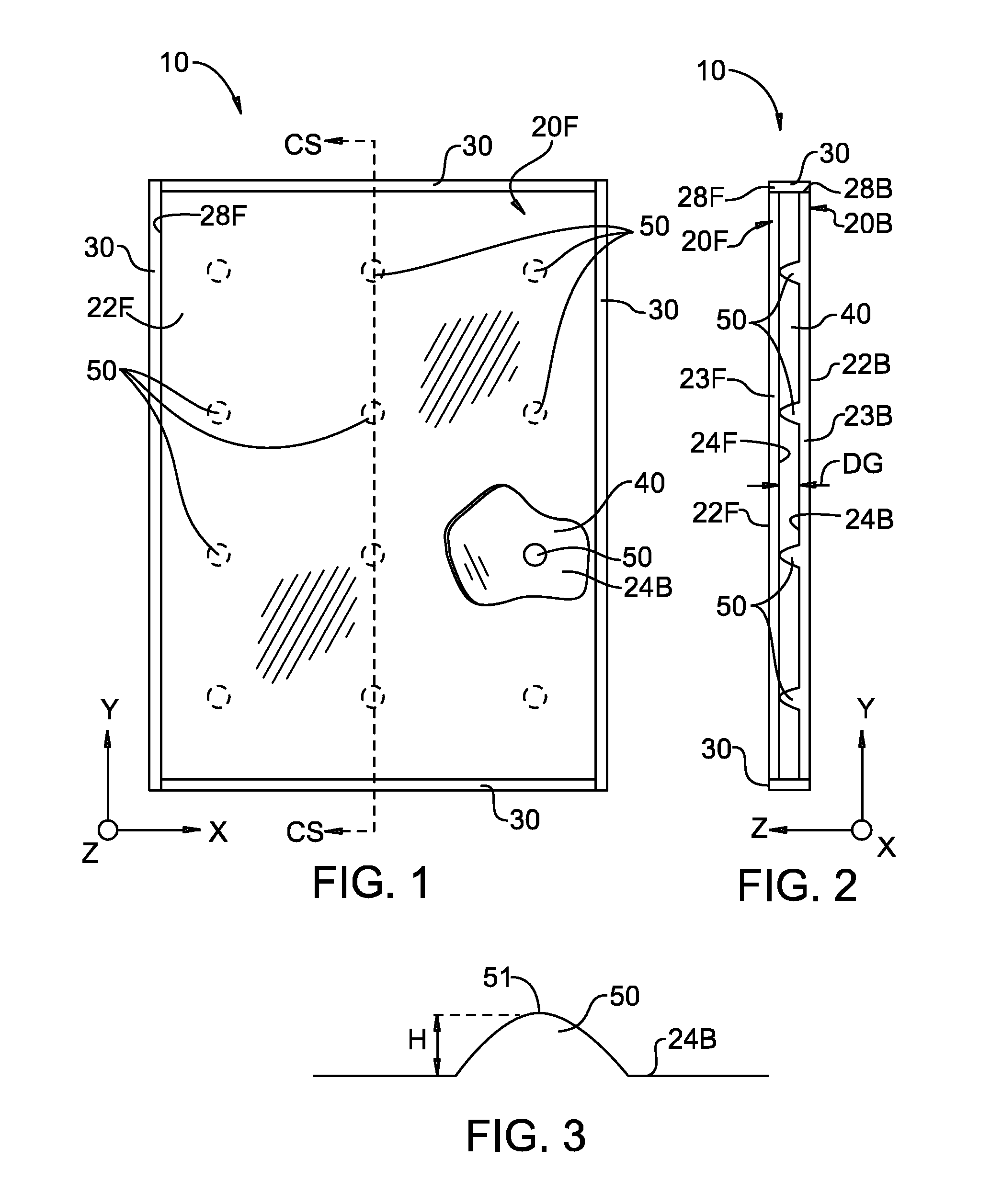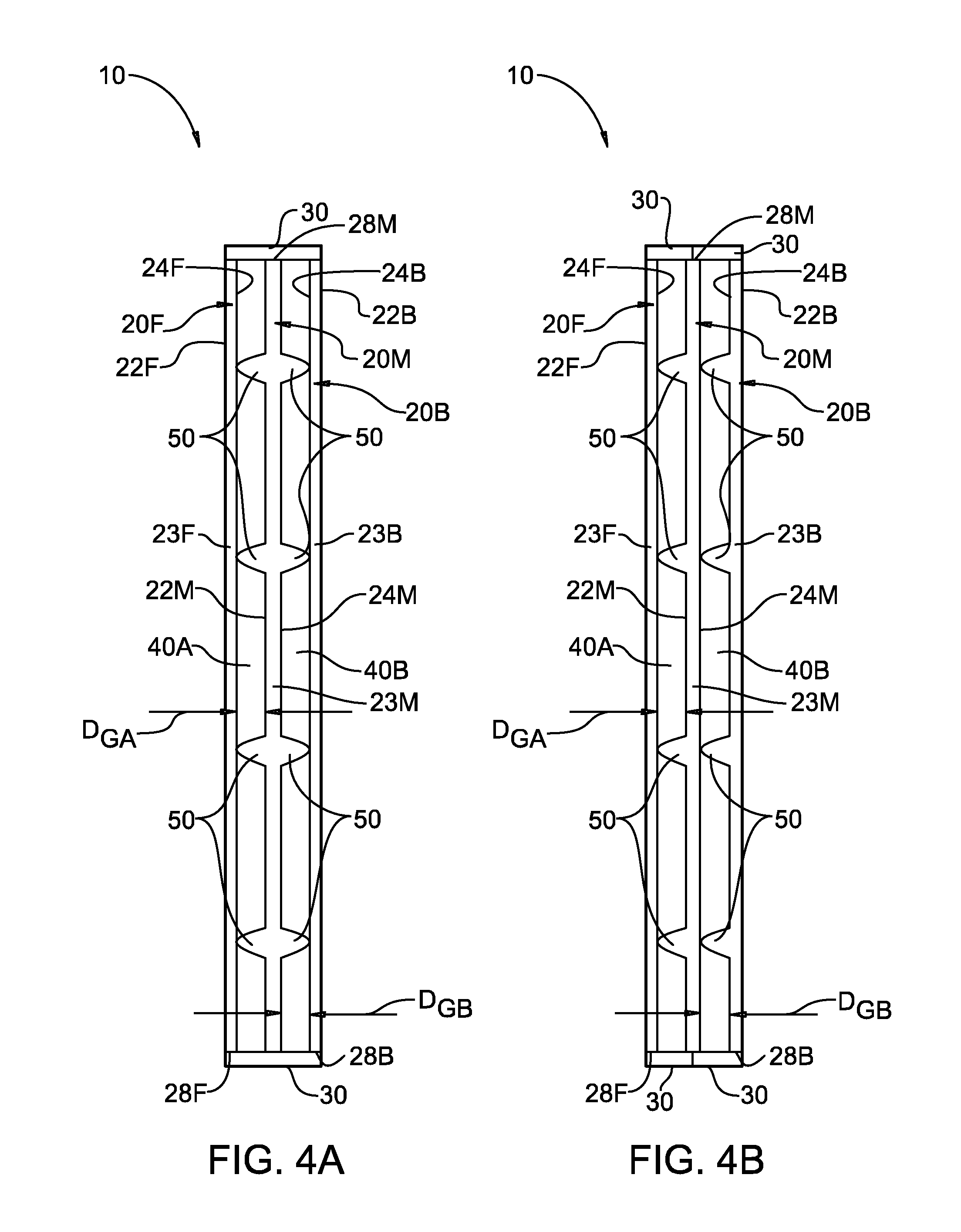Light-weight strengthened, low-emittance vacuum-insulated glass (VIG) windows
a vacuum-insulated glass and low-emittance technology, applied in glass making apparatus, transportation and packaging, manufacturing tools, etc., can solve the problems of low-e coating ablation, relative movement of glass panes and spacers, and unsightly windows
- Summary
- Abstract
- Description
- Claims
- Application Information
AI Technical Summary
Benefits of technology
Problems solved by technology
Method used
Image
Examples
Embodiment Construction
[0029]A vacuum-insulated glass (VIG) window comprises a first glass pane, a second glass pane spaced apart from and disposed substantially parallel to the first glass pane at a first distance, a plurality of glass-bump spacers integrally formed in a first surface of the first glass pane, and a first optical coating formed over both the glass-bump spacers and the first surface in which the first glass-bump spacers are formed, wherein at least one of the first glass pane and the second glass pane comprises a chemically-strengthened glass material, and the plurality of coated glass-bump spacers contact the second glass pane so as to maintain said spaced apart first distance. Two or more glass panes may be incorporated into a VIG window that comprises an evacuated region between adjacent glass panes. Aspects of forming glass-bump spacers, chemically-strengthened glass panes and optical coatings such as low-emittance (low-E) coatings are described below.
[0030]As disclosed herein, glass-b...
PUM
| Property | Measurement | Unit |
|---|---|---|
| Thickness | aaaaa | aaaaa |
| Pressure | aaaaa | aaaaa |
| Height | aaaaa | aaaaa |
Abstract
Description
Claims
Application Information
 Login to View More
Login to View More - R&D
- Intellectual Property
- Life Sciences
- Materials
- Tech Scout
- Unparalleled Data Quality
- Higher Quality Content
- 60% Fewer Hallucinations
Browse by: Latest US Patents, China's latest patents, Technical Efficacy Thesaurus, Application Domain, Technology Topic, Popular Technical Reports.
© 2025 PatSnap. All rights reserved.Legal|Privacy policy|Modern Slavery Act Transparency Statement|Sitemap|About US| Contact US: help@patsnap.com



